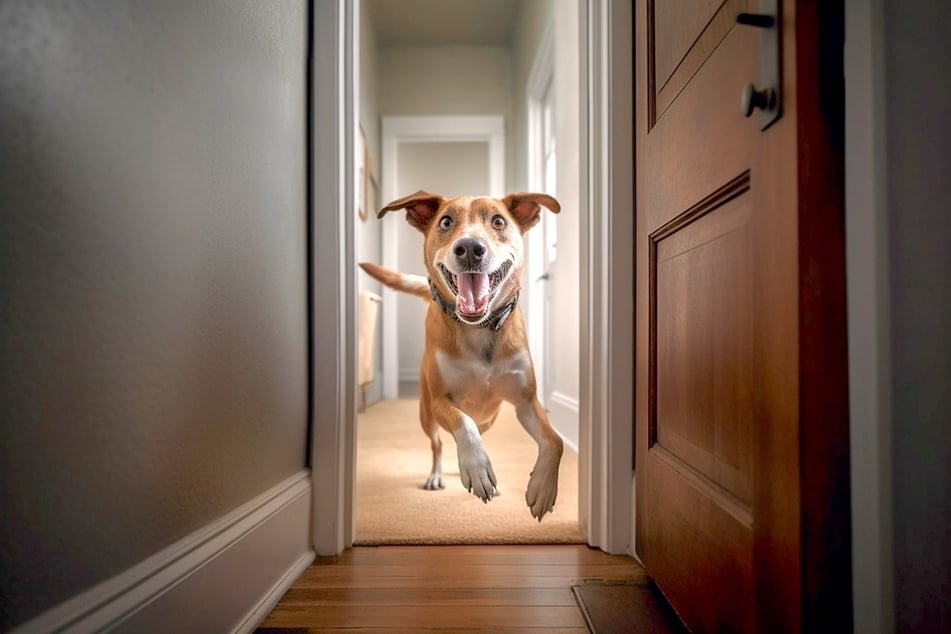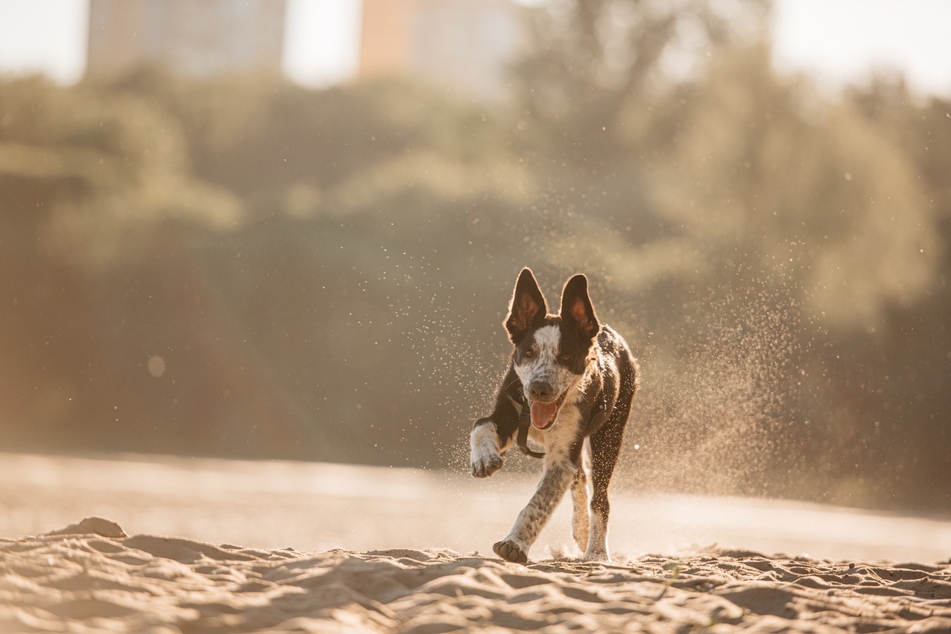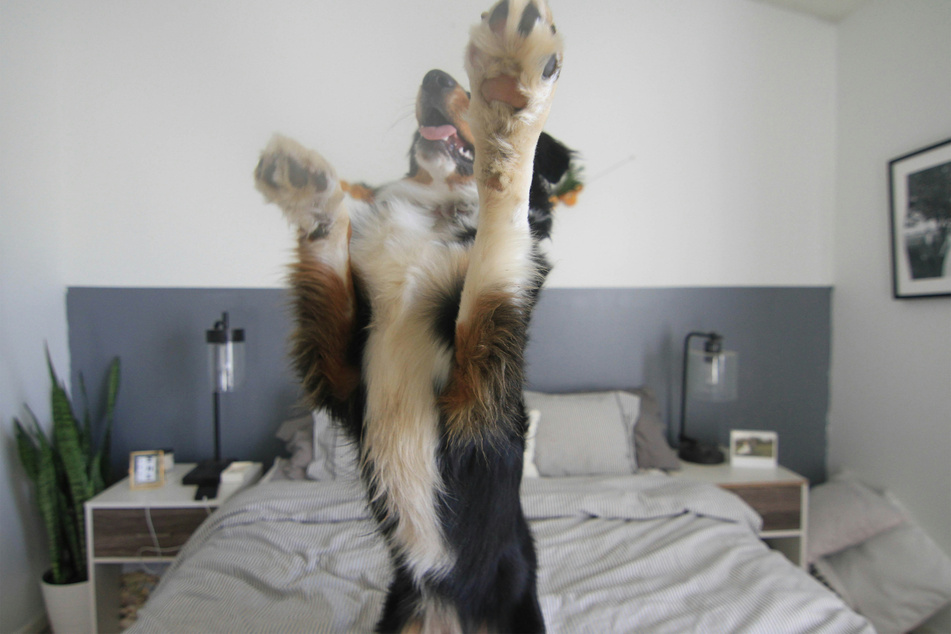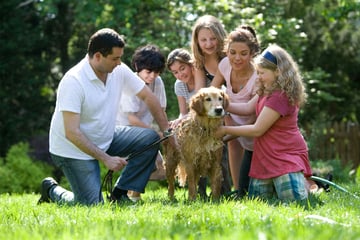Dog zoomies: What are they and how to stop them
Have you ever noticed that your dog sometimes runs around the house like an absolute madman? If you have, then you have likely wondered why. So what are dog zoomies, and how can you help your pup?

Zoom zoom!
If you've ever owned a dog, you have probably noticed that they sometimes go berserk, running around the place randomly, with no apparent reason or rhyme as to what could possibly be so exciting.
This is what many people like to call the "zoomies," and they're worth talking about.
So what exactly are these famed dog zoomies, why do they happen, and do they indicate that your dog is happy, sad, or sick?
Discover what you can do to stop dog zoomies in this dog guide, and why you shouldn't worry too much about your speedy pooch.
What are dog zoomies?
In essence, dog zoomies are brief moments, which usually last for only a few seconds or minutes, in which your pup runs around the house aimlessly, acting quite hyper. Often charging its way in circles around the house, it will leap over obstacles and continue to exhaust this brief burst of extreme energy until it gets tired and, eventually, stops.
Many people even have a habit saying that their dog needs his or her "five minutes" to get rid of excess energy in these frenetic and spontaneous bursts, and for good reason. Dog zoomies are one of the most common and harmless behaviors a dog can have, and are truly nothing to be worried about.
One of the most common ways a dog will start zooming is by lowering the front of its body, with its paws outstretched, looking you in the eye. When this happens, it is likely preparing to play, and may suddenly jump up, run around, and become so extraordinarily active that it can make you feel both lazy and exhausted at the same time.
Dog zoomies got their name from something rather obvious: The word "zoom." When these fluffy little ones start running they are also "zooming" around, hence the slang phrase commonly used today.

Why does my dog get the zoomies?
There are many reasons why your dog might have the zoomies, but it usually has something to do with unspent pent-up energy that can be especially hard to manage when you live in a smaller space. It's often an expression of pure joy and love, with your dog simply wanting to play with you, and it is rarely anything to be truly or deeply concerned about.
Here are a few common reasons why your dog might get the zoomies:
- Many dogs will get the zoomies when they see something that they are excited about, such as a favorite toy or a person that they love. Even environmental features, like snow, can cause rejoicing and gallivanting.
- It's extremely common for dogs to get excessively excited about beaches and lakes - any body of water, for that matter - and suddenly get a burst of the zoomies which sends them straight into the water.
- Other doggos will also trigger bursts of the zoomies, with extreme emotions and love boiling to the top and mixing with excitement to create a nearly uncontrollable pooch that's more than happy to be on the move.
- Whenever a dog has been contained for a period, perhaps on a leash or in a car, it will likely have a fit of the zoomies as soon as it is let free. This also goes for situations like baths and grooming.
- Dogs are often more active at dawn and dusk, getting excited and energetic both at the rising and the setting of the sun. This is completely natural.
- Overtiredness, much like with human children, can also cause a hyper and zooming mood in dogs, as they overcompensate for their exhaustion.
- Health issues and pain can cause apparent fits of the zoomies, but it's not usually a "real" zoom. If you suspect such may be the case, go to the veterinarian as soon as possible.
Ultimately, there are a variety of different reasons why dogs might get the zoomies, and it is most likely nothing to worry about. Dogs are overly excitable and quite simple-minded, making them easy to trigger into fits of activity that, while sometimes inconvenient, are inevitable.
Over time, you will start to recognize the early signs of dog zoomies and will be able to react quickly and efficiently, controlling the situation and making sure that your dog is safe and happy while it plays.
Are zoomies a sign of a happy dog?
As a general rule, dog zoomies are the sign of an excited and exuberant doggo, but not necessarily a happy one. In terms of your dog's emotional happiness or sadness, zoomies are neither a yes nor a no, they are simply an activity that will occur when your pup has a spurt of energy.
It's important to note that most of the reasons why dogs get the zoomies are relatively positive. Seeing as dogs will get the zoomies when they are excited about seeing someone or something that makes them happy or when something positive happens, it can be deduced that zoomies are generally a good sign when it comes to your pup's mental health.
Factors like tiredness-induced zoomies or zoomies triggered by some kind of illness, however, indicate that they are not always the positive kind. Of course, lethargy or aggression in dogs is a far worse symptom than zoomies, but that doesn't make it a win-win situation.
Ultimately, it's about paying attention to context. If it is clear that the reason for your dog's zoomies is a positive or a neutral one, then great. If you suspect they're not, go to the veterinarian.
How to stop dog zoomies

Zoomies are quite normal for dogs, and very helpful for getting rid of excess energy.
That being said, they can sometimes come at unexpected and inconvenient times, like just before you want to go to bed, or when you're trying to get your darling doggo into your car.
There are also risks associated with zoomies, not necessarily to do with the reasons why dogs might be zooming, but instead to do with the physical environment around them. Dogs can easily knock things or people over, or slam into walls when they get the zoomies, and this can cause serious problems.
A dog that is romping around at great speeds might not necessarily be paying much attention to where it is stepping or what it is running into. Broken objects can not only hurt your dog when they fall, but can pose as hazards for your dog's continued antics. As such, inside zoomies can be genuinely dangerous, and need to be monitored and controlled with precision.
Here are a few tips and tricks to safely controlling and stopping dog zoomies:
- Dog-proof your home as best as you can: While there is literally no way that you can perfectly dog-proof your home, you can do simple things like keeping delicate stuff away from the edges of shelves and decorative valuables sealed in glass-doored cupboards rather than on bookshelves. Keep wine away from the edge of tables and anything toxic well out of reach.
- Train your dog well: From a young age, you should be training your dog actively and effectively. Your dog needs to respond to your commands and stop when it is being told to stop. If you do this, then you can allow your dog the zoomies when it is safe, and stop them with a simple word when they are not.
- Exercise your dog more: If your dog's zoomies are because of an excess of energy, there's a very simple solution - find another way to get rid of that energy. You are probably not walking and exercising your dog enough, so it's time to get moving and get started.
- Discipline can work, but be careful: In the same vein as training is, of course, simple disciplinary procedures. Of course, we are not talking about being nasty or cruel, we are simply suggesting things like selectively ignoring your doggo when it misbehaves. Simple disciplinary procedures can reduce the frequency at which your dog gets the zoomies, but will never eradicate them entirely.
Using simple common sense techniques to calm your dog down, and having a basic understanding of dog psychology and the way that dogs behave, will equip you well enough to control and deal with dog zoomies. It's nothing to worry about, so stay calm yourself.

Don't worry too much if your dog gets the zoomies
Every dog will get a fit of the zoomies every now and then. Try to engage with your dog and enjoy its energy, bouncing off some of its positivity onto yourself. Life can be stressful and difficult, and one of the best parts of dog ownership is the fact that your pooch has a near-infinite supply of relentless excitement and happiness. So enjoy the ride.
While there are reasons why a dog's zoomies could spell trouble, it will usually be pretty obvious if this is the case. Of course, if you're concerned, then you should take your pet to the veterinarian as soon as possible.
Cover photo: 123RF/Thamkc




